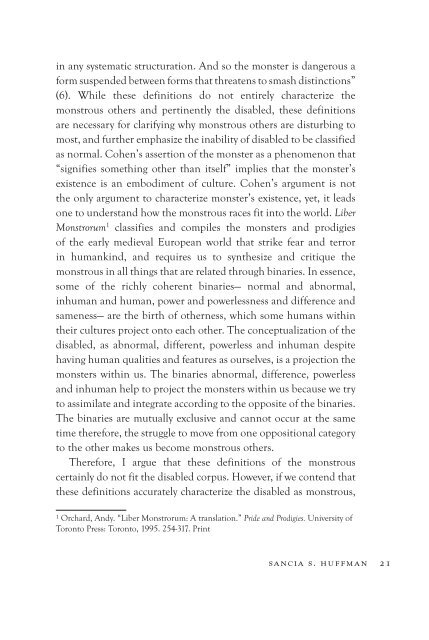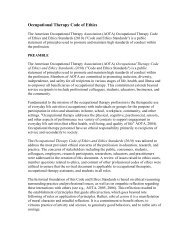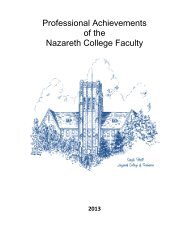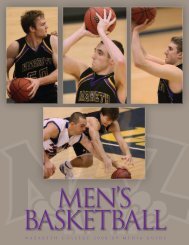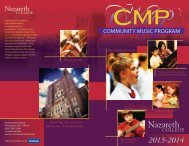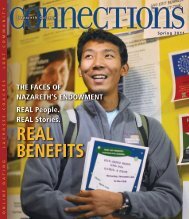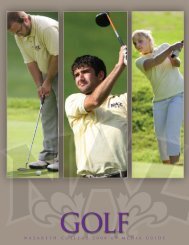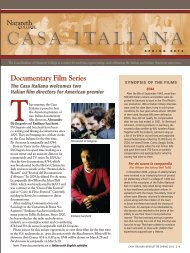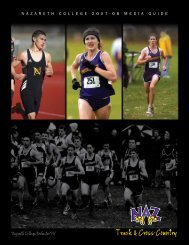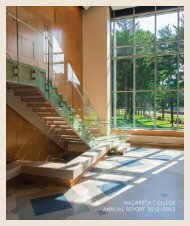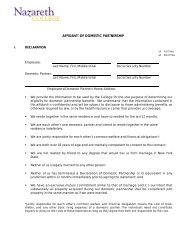Afternoon of Alterity - Nazareth College
Afternoon of Alterity - Nazareth College
Afternoon of Alterity - Nazareth College
You also want an ePaper? Increase the reach of your titles
YUMPU automatically turns print PDFs into web optimized ePapers that Google loves.
in any systematic structuration. And so the monster is dangerous aform suspended between forms that threatens to smash distinctions”(6). While these definitions do not entirely characterize themonstrous others and pertinently the disabled, these definitionsare necessary for clarifying why monstrous others are disturbing tomost, and further emphasize the inability <strong>of</strong> disabled to be classifiedas normal. Cohen’s assertion <strong>of</strong> the monster as a phenomenon that“signifies something other than itself” implies that the monster’sexistence is an embodiment <strong>of</strong> culture. Cohen’s argument is notthe only argument to characterize monster’s existence, yet, it leadsone to understand how the monstrous races fit into the world. LiberMonstrorum 1 classifies and compiles the monsters and prodigies<strong>of</strong> the early medieval European world that strike fear and terrorin humankind, and requires us to synthesize and critique themonstrous in all things that are related through binaries. In essence,some <strong>of</strong> the richly coherent binaries— normal and abnormal,inhuman and human, power and powerlessness and difference andsameness— are the birth <strong>of</strong> otherness, which some humans withintheir cultures project onto each other. The conceptualization <strong>of</strong> thedisabled, as abnormal, different, powerless and inhuman despitehaving human qualities and features as ourselves, is a projection themonsters within us. The binaries abnormal, difference, powerlessand inhuman help to project the monsters within us because we tryto assimilate and integrate according to the opposite <strong>of</strong> the binaries.The binaries are mutually exclusive and cannot occur at the sametime therefore, the struggle to move from one oppositional categoryto the other makes us become monstrous others.Therefore, I argue that these definitions <strong>of</strong> the monstrouscertainly do not fit the disabled corpus. However, if we contend thatthese definitions accurately characterize the disabled as monstrous,¹ Orchard, Andy. “Liber Monstrorum: A translation.” Pride and Prodigies. University <strong>of</strong>Toronto Press: Toronto, 1995. 254-317. Printsancia s. huffman 21


